Keith Schweitzer of ART(inter) in conversation with New York-based artist Jayoung Yoon.

Jayoung Yoon, Web of Life (2015, performance) Image: Zac-cam studio
KS: There’s a lovely connective thread along all of your work—the sculpture, performance, and film. I get a definite sense of ritual and meditation. The work is haunting, particularly the sculpture, as mysterious and ancient artifacts of a culture unknown to me. What informs your work and where do you draw inspiration from?
JY: My art draws upon diverse spiritual practices that emphasize clearing the mind and directing attention into the body to achieve a heightened awareness of the present.
In 2005, a year before I moved to the USA, I attended the retreat in South Korea. I learned the practice of fully inhabiting the present, cleansing memories, and recognizing our duality. It was a turning point for the way I think about art and life. After I relocated to the US, I was more interested in diverse spiritual practices & texts. For example, A Course in Miracles by Helen Schucman, The Disappearance of the Universe by Gary Renard, The Power of Now by Eckhart Tolle, and other authors like Deepak Chopra, and Anita Moorjani. Also, since my work relates to meditative action, emptying the mind and thought, I found a connection between Buddhism and my work.
For example, in my single channel video Crown of Thoughts (2014), I combined teachings and derived inspiration from both Christianity and Buddhism.
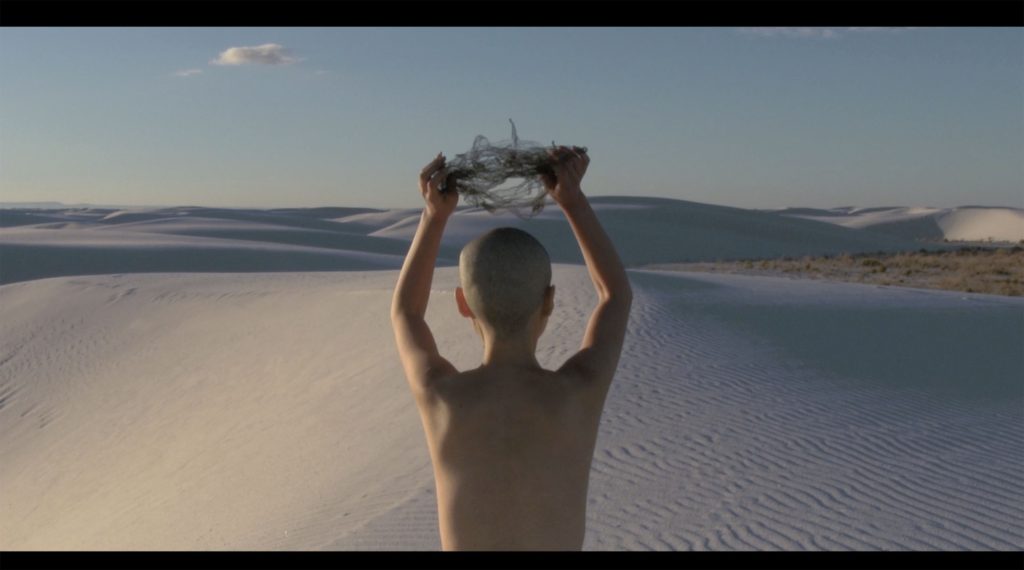
Jayoung Yoon, Crown of Thoughts (2014, Single-channel video)
According to the biblical Gospels, during the crucifixion of Christ, a crown of thorns caused him pain, and degraded Christ who was a symbol of majesty. And yet, Jesus was willing to endure the pain, and embraced the degradation. In Buddhism, suffering comes from human’s own deluded states of mind. In order to realize the nature of mind, first we need to accept the fact of suffering and observe it without reacting.
I decided to make a crown of thorns out of human hair that represented the impurity of mind, that which causes our pain. In the video, I show a process of enduring, and letting go as act of purifying the mind.
In my videos, I perform ritualistic meditation ceremonies. My head is shaved, as monks do, and I meditate with my back to the camera, embodying the detachment from gender, culture, time, thought, and ego. The immersive quality of film in conjunction with my androgynous appearance invites viewers to inhabit my body, vicariously experiencing the ritual and the transformation it engenders.

Jayoung Yoon, Form and Emptiness series (2015-16,human hair, glue, 8″x8″x8″)
KS: You use hair as your medium. What is the significance of hair to you personally, and how does it then relate to your work?
JY: I was looking for a material that presents both physical and spiritual significance. Human hair, at once tactile and ephemeral, has become my visual nexus for the intersection between the physical and spiritual realms. As a material, hair is intimately corporeal and focuses the viewer’s attention on the body. Since its physical properties make it last long after death, it is an especially appropriate symbol of remembrance. For example, for hundreds of years, people made hair jewelry to commemorate and mourn the death of their loved ones. Also, hair is involved in the flow of time. Hair falls out continuously, then is replaced by new hair.

Jayoung Yoon, Form and Emptiness series (2015-16, human hair, glue, installation view)
My work process is also associated with the cycles of life from birth to death. I use the hair sheared from my head, then transform the hair into wearable sculptures for my body. It comes back to my body with new symbolism, which represents invisible thoughts. In the videos, I let go of the sculptures, representing the departure of my thoughts from my body.
KS: What is the relationship between your sculptural work and your films and performances?
JY: I make two kinds of hair sculptures. One kind is for videos or performances, and the other is for stand-alone sculptures.
For the first kind, I usually develop an idea for the video and performance project first, and that inspires the forms and symbolism of the hair sculptures. These hair sculptures often represent invisible thoughts, and I either wear or interact with them.
For example, in my video Watching the Mind (2009), I filmed myself wearing the shirt made of human hair, which unravels into the air, representing the invisible mind emanating from my body.

Jayoung Yoon, Watching the Mind (2009, Two-channel video)
Also, Umbicality (2012) was a live performance where two performers were connected by a funnel shaped organic web made of hair. The web represents a symbiotic spiritual connection. During the performance, the performer’s bodies play out the essence of oneness.
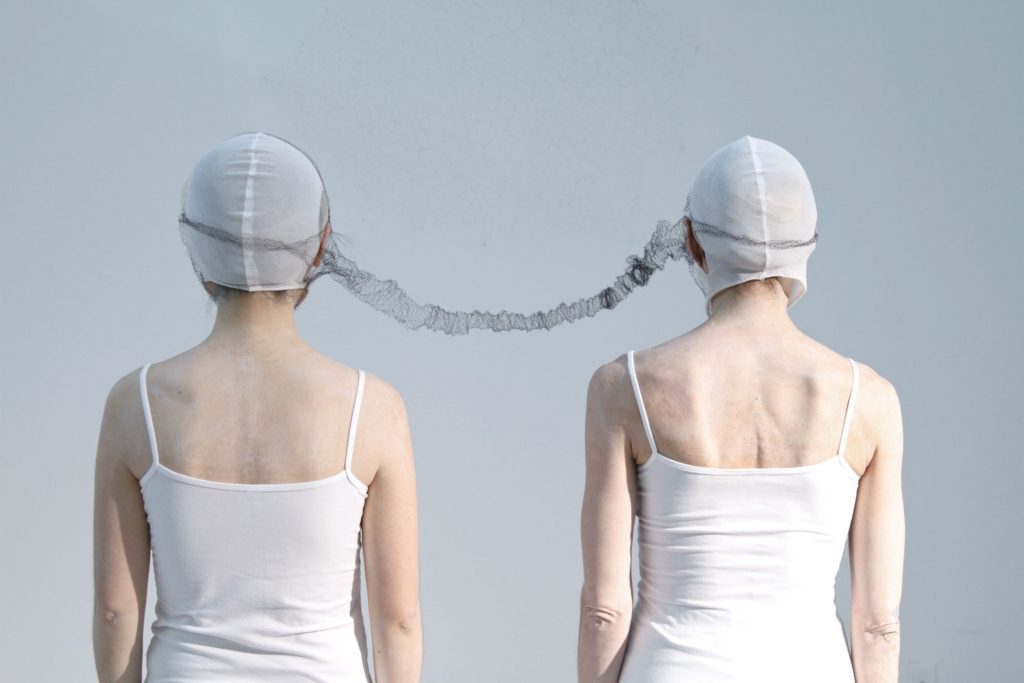
Jayoung Yoon, Umbicality, 2012
KS: Your show at SVA’s Flatiron Project Space is currently on view. Tell me about it.
JY: Threaded is a SVA Summer Residency Program alumni exhibition, featuring two artists, myself, and Alice Quaresma (Brazil/USA) curated by Keren Moscovitch.
Keren describes her curatorial vision for the show as follows:“Threaded investigates the psychic strands and physical sinews connecting an individual to her environment, while acknowledging the complex interaction of time, space and memory.”
I found an intimate connection between Alice’s photographic prints and my hair sculptures and videos in relation to our memories.
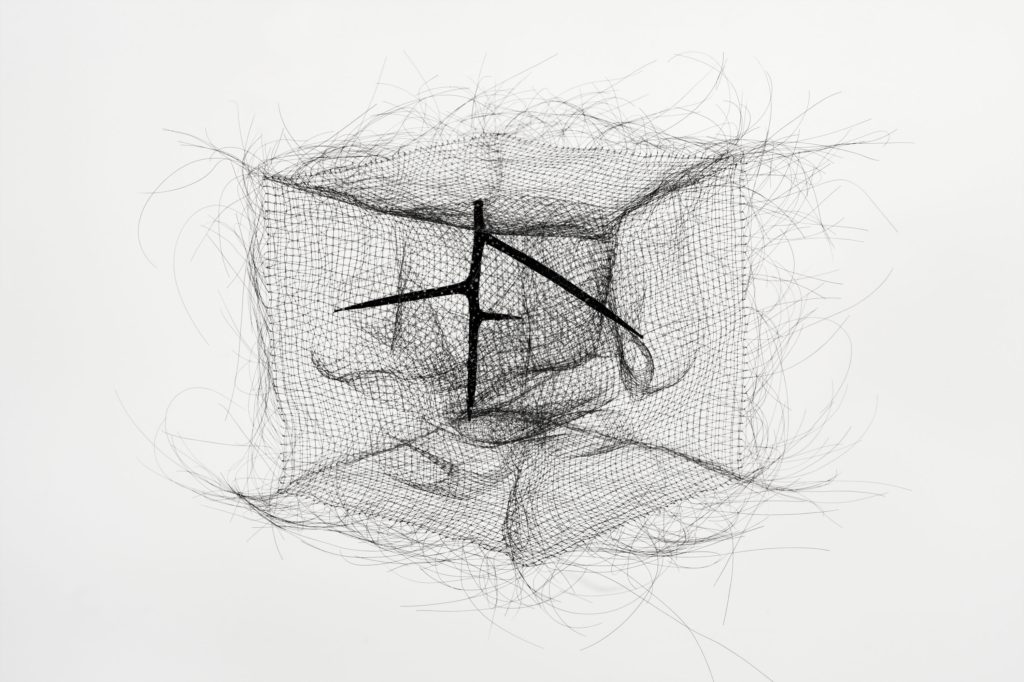
Jayoung Yoon, Sensing Thought 03 (2015, human hair, glue, thorn fragment , 8″x8″x8″)
For my hair sculpture, Sensing Thought 03, I had an idea from a memory box. A memory box can mean different things to different people, but essentially it is a place to store your special keepsakes. They might be photos, special letters and objects. A thorn fragment is wrapped with hair, encased in the box shape of woven hair, which represents a painful memory within the unconscious mind. And I thought about our memories. Memories are constantly shaped and altered by our perceptions, and our perceptions shape our memories again.
In meditation teachings, it is often said that our thoughts are ‘like clouds passing through the sky’. Meditation helps to observe thoughts and memories without judging. There is nothing you need to do with these thoughts except bring your attention to them. So in my hair sculpture The Cloud, I was envisioning thought clouds and fragments of memories.
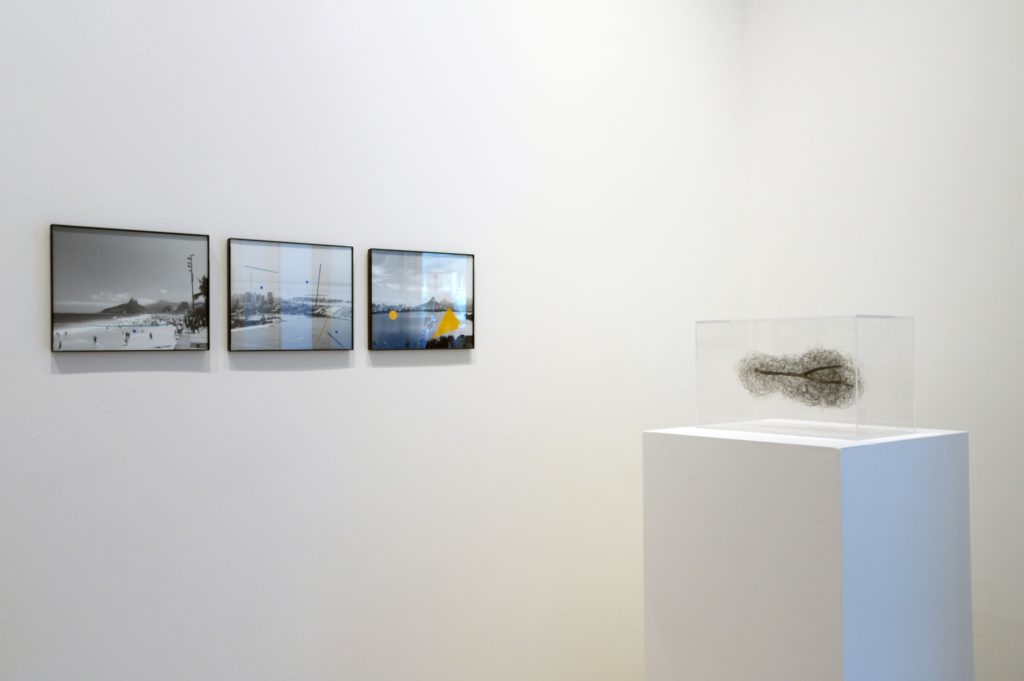
Jayoung Yoon, The Cloud, No.1 (2014 , human hair, branch fragment, 7″x13″x4″)
In the series Nest, Alice Quaresma draws and paints geometric shapes and lines on photographic prints in relation to her memories to reflect on political and cultural events in her hometown of Rio de Janeiro. Through abstracting photography, she captures her childhood memory and an emotional connection with the place.
KS: You were a Brooklyn-based artist for many years, then took the big leap of moving to Beacon, NY. How has that experience been for you? Has it influenced your work?
JY: Since moving to Beacon, I take walks on nature trails almost everyday. It helps me to empty my mind and to observe more closely, to look and listen to the subtle energies of the environment and objects. I can slow down and be present in the moment.
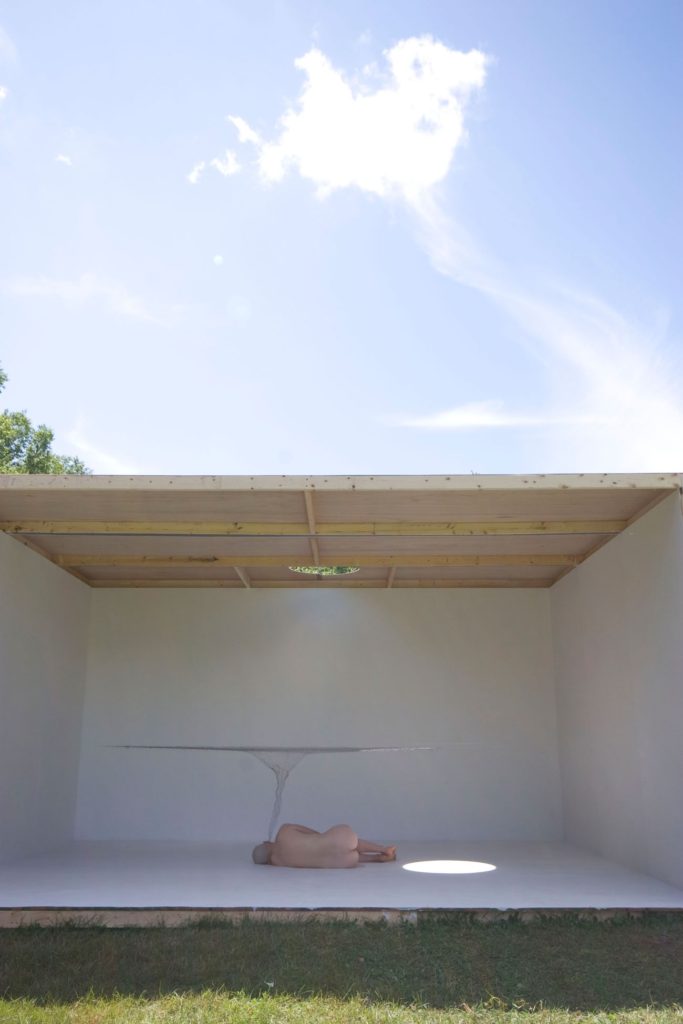
Jayoung Yoon, Listening to the Mind I (2009, single-channel video)
It reminds me of the experience I had when I worked on Listening to the Mind (a video project) in Maine, 2009. I filmed while I was lying on my side and facing away form a camera on the floor. My body entered a state of meditation by lying still on the floor for ten hours. By feeling the subtle movements of the hair sculpture connected to my ear, listening to the bird and insect sounds, and feeling the wind, light changing and temperature on my whole naked body, I entered into the present. It was a transformative experience for the body and mind.
The minister in Korea once quizzed me. “Do you know what the most spiritual and powerful phrase in The Bible is?”
I answered, “It may be, ‘Love one another. Isn’t it?’”
He told me, “It is, ‘Look at the birds in the air and see how the lilies of the field grow.’”
I asked him, “Why is that?”
His answer was that the birds don’t deliberate or criticize the weather. And the lilies just do what they do, effortlessly and spontaneously. We seem to have lost the ability to simply be present.
Living in Beacon helps me to remain in that state of mind.
View more of Jayoung Yoon’s artwork on Instagram: @jayoungart, Tumblr, Facebook, and on her website: jayoungyoon.com. Her work is on view at SVA’s Flatiron Project Space (133/141 West 21st Street, New York, NY) in Threaded, which runs through July 29th.
Keith Schweitzer is a New York City based arts organizer, curator and producer. He is Co-Founder/Director of The Lodge Gallery, located on Manhattan’s Lower East Side. He is also Director of Public Art for Fourth Arts Block, the nonprofit leadership organization for Manhattan’s officially designated Cultural District in the East Village. You can find him on Twitter as @Keith5chweitzer, and on Instagram as @pseudohaiku.

[…] interview originally appeared on ART[inter]. It has been updated and republished […]